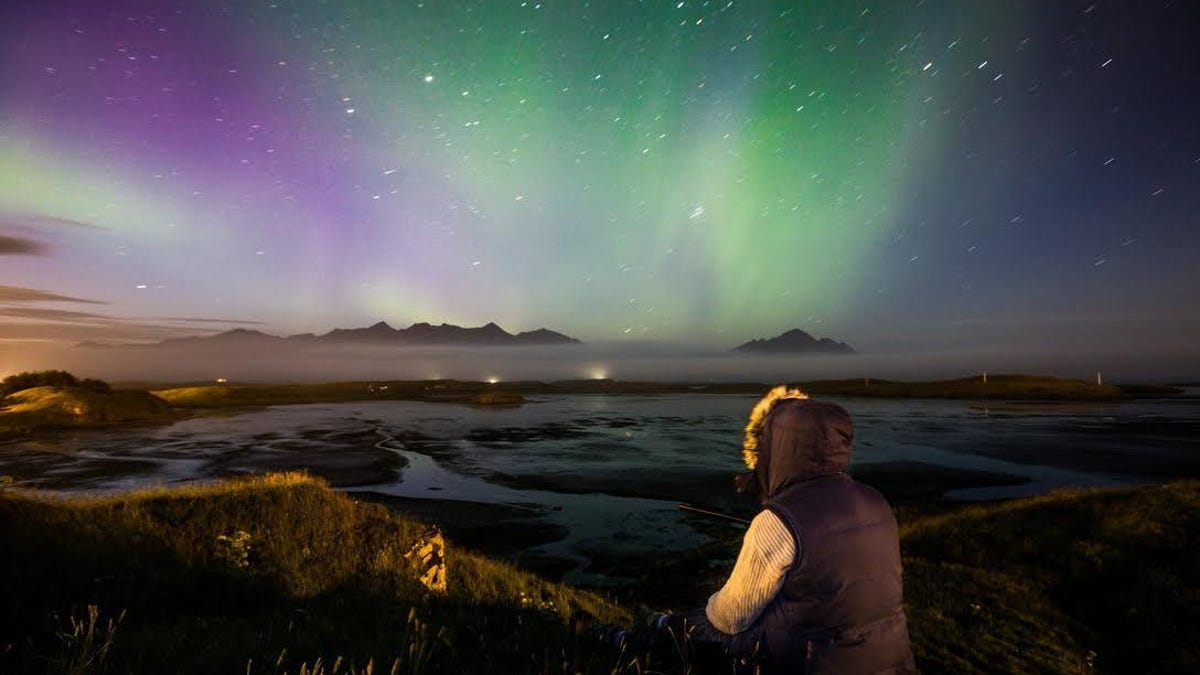Aurora? Sorta! The northern lights were trending on social media Thursday, but don’t get your hopes up too much. Only a limited region of the U.S. will be able to see it.
According to the Space Weather Prediction Center at the National Oceanic and Atmospheric Administration, Thursday’s aurora borealis will be rather mild. The agency is calling for a Kp index of around 4, which is indicative of a “quiet aurora.” Over the last few weeks, these have sprung up rather regularly, denoting that the auroras happening this week aren’t anything too special.
Who Knew the Northern Lights Had a Season? We’re In It Right Now
John Clarke, professor emeritus of astronomy at Boston University, says that the online predictions are closer to 5 Kp.
Despite the higher prediction, Clarke says that the aurora should mostly cover Canada and not the US, but does note that “what happens depends on the solar wind, and (the Kp index) are just predictions.”
There is a chance that people in some states will be able to see it, mostly in states bordering Canada. They include Washington state, Montana, North Dakota, Minnesota, Wisconsin, Michigan, and Maine. In the unlikely event it reaches further south, South Dakota, New Hampshire, and Vermont may get in on the action.
People in Alaska will have the best view, as the strongest part of the aurora is set to slice right through the central and northern sections of the state.
Last year, there were a couple of outstanding examples of aurora borealis that reached as far south as Texas for some people. Ever since, aurora sightings have become big news, even if they aren’t the most spectacular examples.
Check Out These Breathtaking Northern Lights Photos From Aurora Watchers
Are more auroras coming?
While this aurora isn’t anything too special, it doesn’t mean that a good aurora won’t come soon. We’re in the midst of aurora season, which spans March and April every year (along with September and October). That means for the next month, there is an increased chance of activity.
The sun is also at the peak of its 11-year cycle, which means solar activity will be at an all-time high for the next year or so. When the sun is this active, it throws more solar flares than normal. Since solar flares hitting Earth are how auroras are formed, that means there’s an even higher chance of a good aurora happening over the next month.
However, solar weather is a lot like regular weather here on Earth. It’s difficult to predict. So, there may be a quiet aurora season despite all the odds being in favor of a big aurora coming soon. Thus, if you are hugging the Canadian border, it wouldn’t hurt to go outside and check out the sky tonight. It might be better than the forecasts indicate.
Read the full article here


